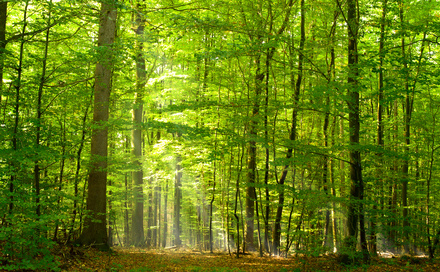The deciduous forest ecosystem in Britain and much of western Europe are dominated by the oak. In Britain, it has been estimated that the oak community has existed for about seven and a half thousand years. It is made up of essentially two kinds of oak. The pedunculate oak which is essentially lowland, the soil is usually clay and is low in acidity. The light penetration is moderate and the under story of smaller trees is typically hazel, hawthorn and willow. The ground flora consists mainly of dogs mercury, bluebell, anemone and wood sorrel.
And the Sessile oak, which is more of a highland tree and is associated with more of the acidic igneous rock condition of West Country England, parts of Wales,Scotland and Northern Ireland. These forest ecosystems are usually found above 300 meters and are tolerant of coarser soils of sandstone grit and shale. The under story (the smaller trees) are birch holly and alder. The ground flora consists of bracken, brambles and sometimes creeping soft grass. The grasses often do become more healthy and change with higher elevation (Pears p224-225 Basic Bio-Geography,Longman Group Ltd 1977&85).
Although oak trees usually dominate in both these highland and lowland forests, these oaks also share the ecosystem with many large other species, such as ash, maple, beech, in some areas in south east England, lime. Oak forest systems have a large amount of autographs and as a result are able to contain much energy during spring, summer and early autumn. Since oak forests are mainly deciduous they contrast more strongly with the change of seasons than coniferous ecosystems and their cyclical processes may be more evident. The animals they contain play a part in this cyclical process. For example, the wood mice tend to eat seedlings, buds and and arthropods in the spring and in late autumn and winter they eat nuts and fruits. The shrews and hedge hogs eat mainly invertebrates in the warmer month and then hibernate for the winter. Also many birds for example the warbler fly south for the winter.
